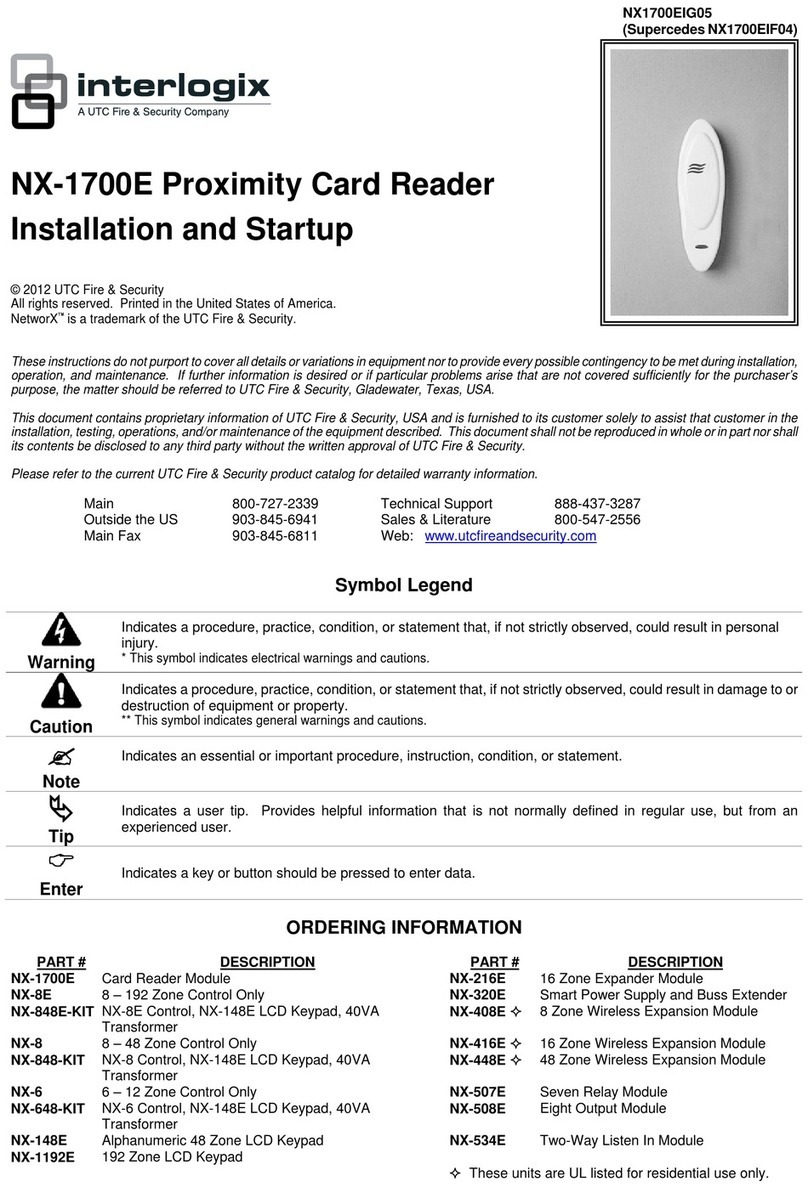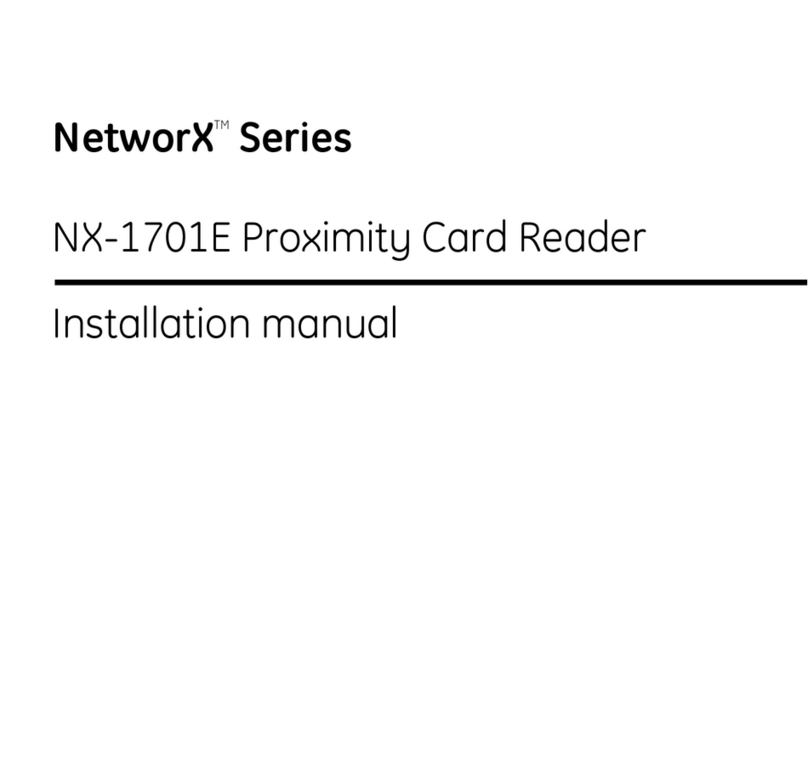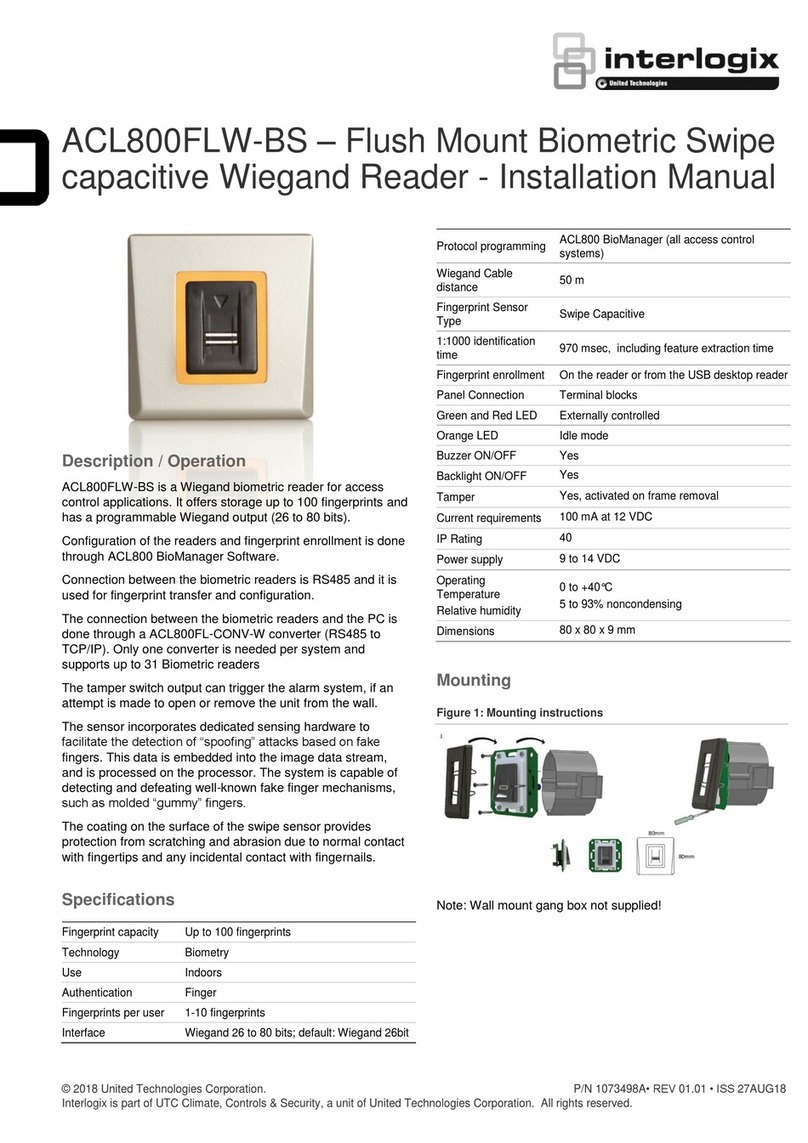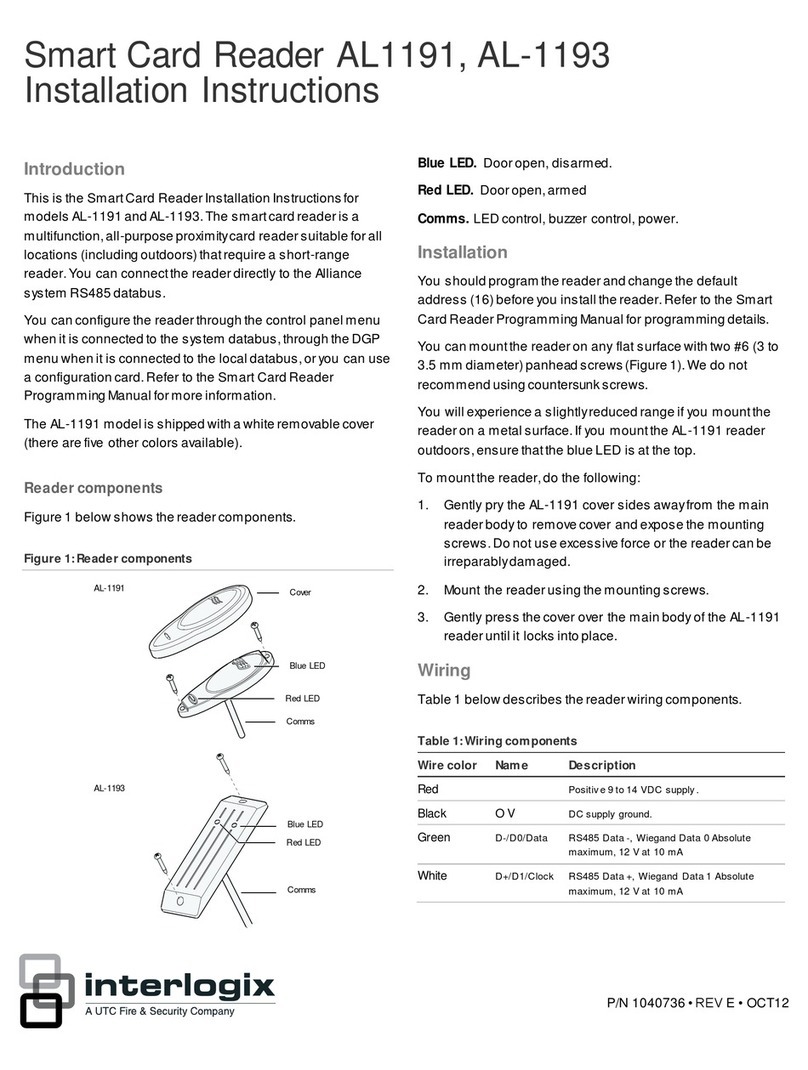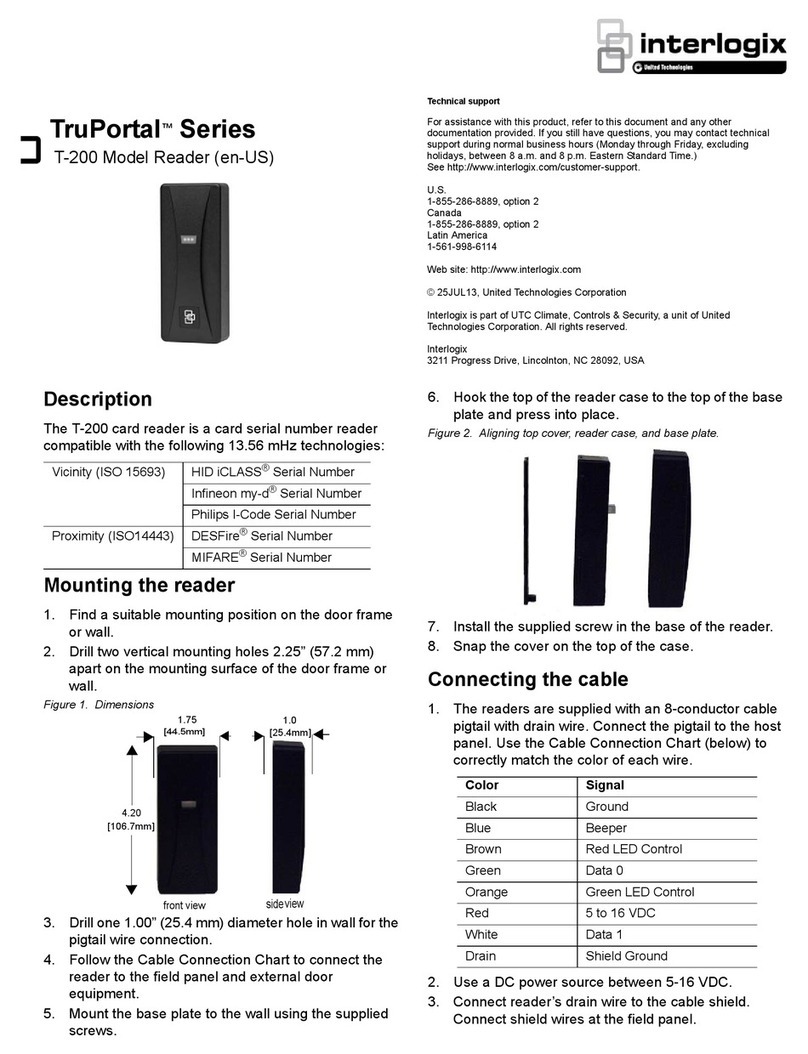
4 / 14 P/N MAINST-ATS1197 (ML) • REV D • ISS 11JUN19
Menu 1, 12, 14 and 15 are reserved menus.
Menu 2, LEDs offline
Select either two-wire (default) or one-wire LED control.
For two-wire LED control:
•The brown wire controls LED 1 red (Arm). Wire grounded:
LED 1 red on, wire open or at +5 to 14 V: LED 1 off.
•The yellow wire controls the LED 1 green (Disarm). Wire
grounded (0 V): LED 1 green on, wire open or at +5 to
14 V: LED 1 off.
•Both yellow and brown wires grounded (0 V), LED 1 is on
yellow. Not valid when used on UTC products.
For one-wire LED control, the brown wire controls LED 1
green-red dual colour.
•Grounded or 0 V, LED 1 green on.
•+5 to 15 V: LED 1 red is on.
•Open or high Z, or +2.5 V: LED 1 off.
Menu 3, Valid card flash
If enabled (default), the green LED will give one short flash
when the card is badged. The panel controls subsequent
flashes.
Menu 4, Night light
A dimly lit keypad backlight provides the night-light to easily
locate the keypad in dark locations (enabled by default).
Menu 5, Protocol options
This option selects the method by which the reader sends data
to the panel. The options are Wiegand (default) or Magnetic
stripe. See option 16 for more data on transmitted data details.
Menu 6, Card beep
If enabled (default), the beeper will give a short beep when a
card is badged. The panel controls subsequent beeper activity.
Menu 7, Watchdog
Offline mode only. If enabled, one byte of data is sent to the
host every minute to indicate that the RAS is connected and
operating normally. If the ATS1197 tamper is active, the data
byte will not be sent (disabled by default).
Menu 8, O/C output
Select one of the following options:
•Door relay (online mode only) —The open collector output
activates (active low) when the door open signal is sent to
the ATS1197 (default setting).
•Tamper output (online or offline modes) —The open
collector output activates (active low) when the ATS1197
Tamper is active.
•Card data present (offline mode only) —The open
collector output activates (active low) when the card data
is being sent to the host.
Menu 9, Option card
This option enables (default setting) and disables the use of
reader configuration (option) cards at the reader. If an installer
wishes to prevent the modification of the reader setup by
configuration card, this option should be disabled.
Menu 10, RTE (Egress)
The RAS is fitted with Request To Exit (RTE) control (yellow
wire). The open collector output (violet wire) may be used to
control a door relay. RTE is only available in online mode.
There are three options to choose from:
•RTE disabled. When RTE is not used, it is recommended
to disable it.
•RTE only. This option requires a simple push button to be
connected to the yellow wire. A press of the button will
release the door lock relay. Used for a quick exit from an
Area (enabled by default).
•RTE arm/disarm. Do not use.
Menu 11, Factory defaults
This option returns all RAS settings to the factory default
condition.
Menu 13, Last card
This option displays the number of the last card badged on the
reader, in the format: facility code/system code, ID number or
as raw card data (depends on setting of security mode).
Menu 16, Security mode
This option selects the type of user card the reader will
recognise. The reader will recognise configuration and default
cards in both modes. The possible modes are as follows:
•Unsecured mode (default setting) —The reader will
recognise blank or un-programmed cards only, by using
the card’s unique serial number. The 4-byte security
password is not used. Unsecured mode requires the use
of an expanded memory system.
•Secured mode —Only cards programmed on the
ATS1620/1621/1622 programmer will be recognised in
this mode. The 4-byte security password is used.
Data transmission
The following tables list the formats by which the card reader
transmits data, as determined by:
•whether the reader is used online or offline, and by
•menu option 5-Protocol options (Wiegand or Magnetic
stripe), and by
•menu option 16-Security mode (secured or unsecured).
Note: In online mode, select Wiegand in menu 5 to use 26 or
27 bit data, or select Magnetic stripe to use 32 bit data.
Online
When badged on a
reader, 26 or 27 bit data
is transmitted,
depending on whether
the card is programmed
as Wiegand 26 bit or
Aritech Wiegand ASC.
When badged on a reader,
32 bit data is transmitted.






